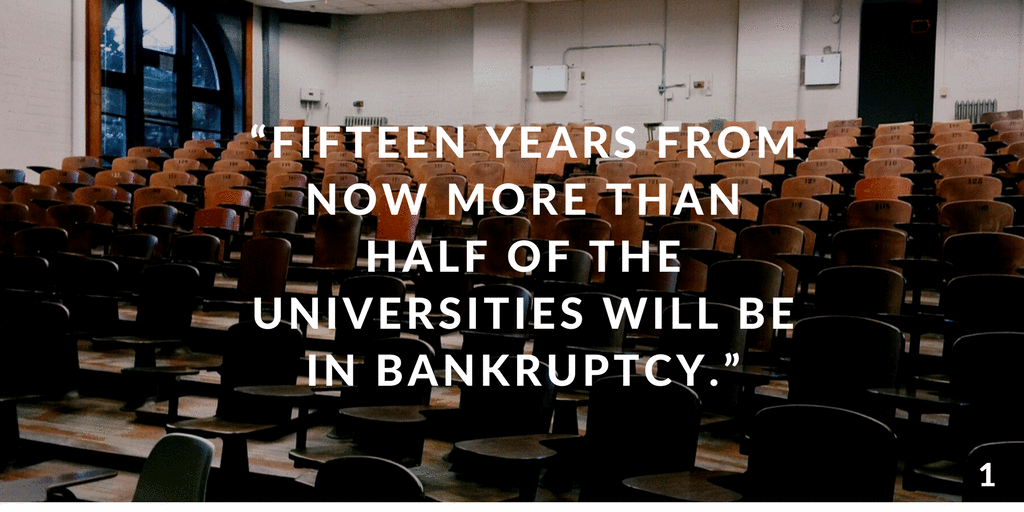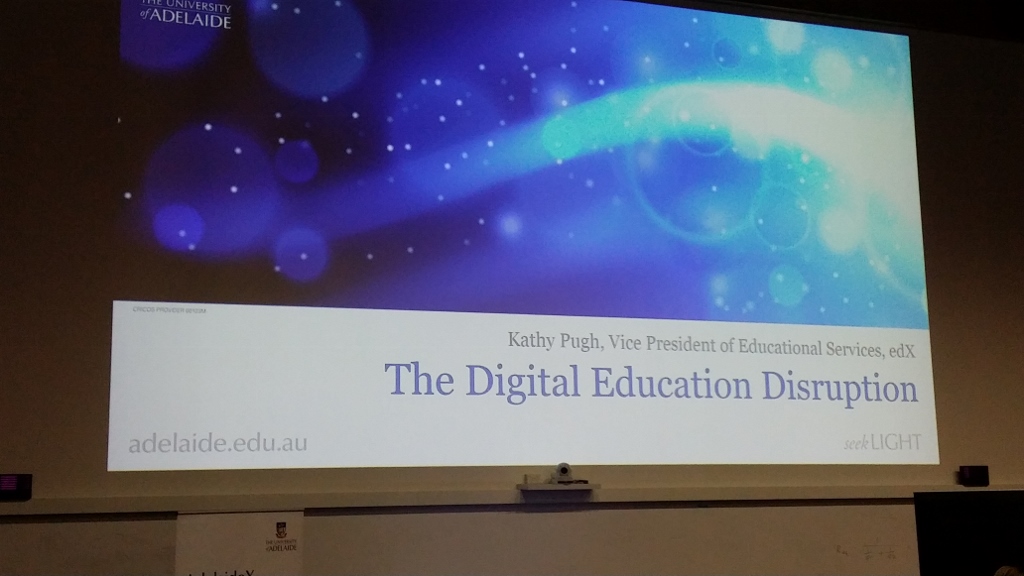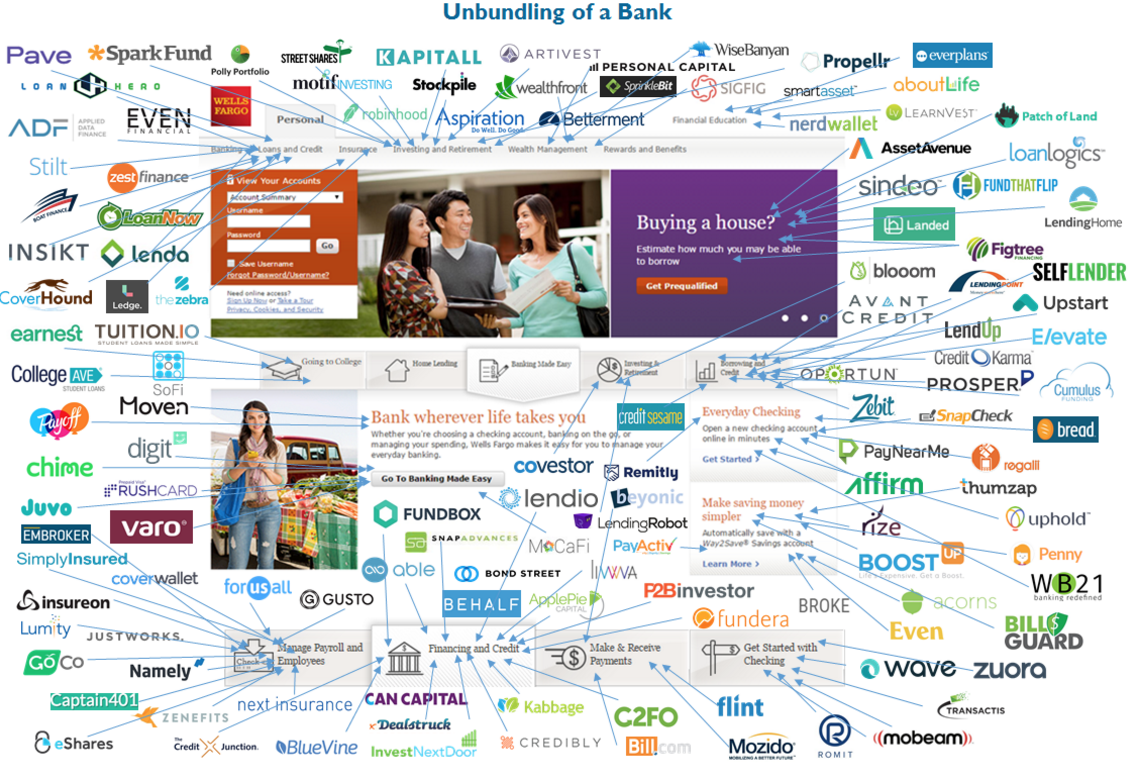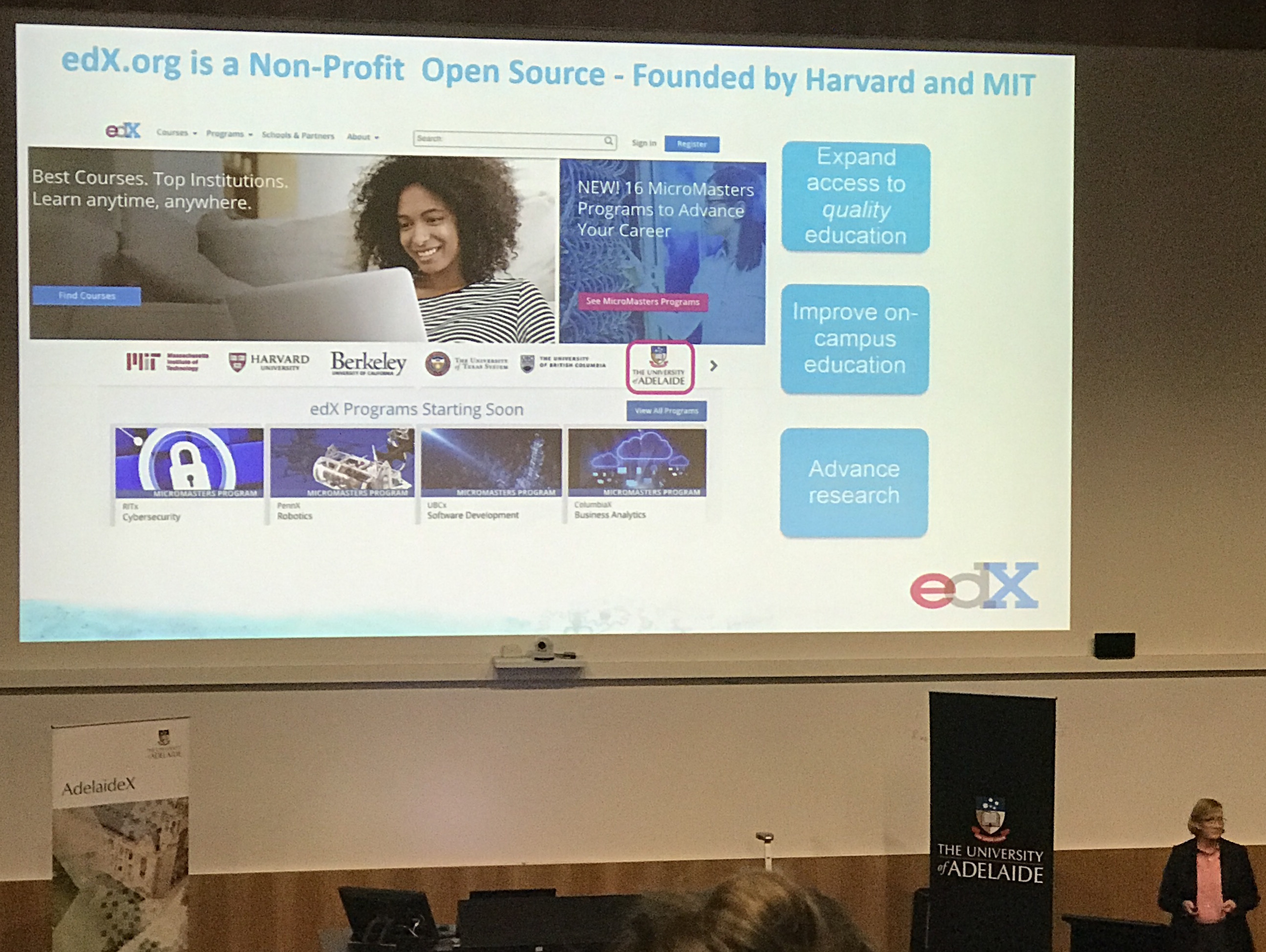
The buzzword “disruption” in the business world is as ubiquitous as emojis are in messages these days. It even feels clichéd to mention how Netflix disrupted DVD rentals, Airbnb disrupted hotels, and Uber disrupted taxis. But what about education, in particular higher education? As some of the most regimented institutions in society, can Universities be disrupted?
Education disrupted
Armed with platform technology, some potential disruptors have emerged over the last two decades - from series of YouTube videos (which is how Khan Academy started), to more serious platforms such as Lynda.com and Coursera. Together they have given rise to the Massive Open Online Courses (MOOCs) movement.
Clayton Christensen - who coined the term “Disruptive Innovation” - considers MOOCs a potentially disruptive technology that can replace weak universities. Moreover, “fifteen years from now more than half of the universities [in America] will be in bankruptcy.”
MOOCs are making everybody sit up and answer the following question:
“How can I justify charging students $45,000 a year to attend large lectures when they can find better exemplars on the Internet?”
I can tell you that Universities are feeling the pinch of potential disruption from online learning. And they are doing something about it.
This is reflected in “The Digital Education Disruption” - a seminar I attended at the University of Adelaide. The third oldest university in Australia had invited a speaker from one of the hottest edtech players in the world - edX.
 Digital education disruption seminar at the University of Adelaide
Digital education disruption seminar at the University of Adelaide
Quick overview of edX
This MOOC provider was actually founded by two prestigious universities Harvard and MIT in 2012. Supposedly, it was in response to the “tsunami” of MOOCs predicted to revolutionise higher education.
Being both nonprofit and open-source, edX partners with over 120 universities, nonprofits, and institutions around the world who host courses on their platform. The University of Adelaide is one of these partners.
 edX platform stats
edX platform stats
The open-source technology behind edX is Open edX, which enables educators and technologists to “build learning tools and contribute new features to the platform, creating innovative solutions to benefit students everywhere.”
The jury is still out on the efficacy of MOOCs but it makes me wonder: if slow-moving, colossal bodies such as educational institutions are doing something to adapt to change, why wouldn’t businesses?
In this blog post, we’ll explore the narrative of digital disruption using the education sector as an example.
How self-disruption becomes the answer to disruption
As mentioned above, edX came about when Ivy League colleges in America anticipated the information revolution was coming to education.
Exploring education through jobs to be done
Before discussing disruption, let’s go back to the basics. Why do universities exist or what jobs do students “hire” universities for?
Using the Jobs to be done framework, we can list a few jobs as follows:
- Personal interactions with lecturers and fellow students
- Knowledge itself and the process of acquiring knowledge
- Job-readiness training
To disrupt universities, MOOC providers need to help users do enough of these “jobs” better, and hence remove any motivation to attend a physical university.
edX’s attempt can be encapsulated in their three programs, or structured series of courses:
MicroMasters
A faster, more flexible, and free way to try graduate level courses offered by universities for those wishing to advance their careers. “Students may apply to the university offering credit for the MicroMasters certificate and, if accepted, can pursue an accelerated and less expensive Master’s Degree.”
=> Potentially doing job #2 and #3 better
Professional Certificate
“Series of courses designed by industry leaders and top universities to build and enhance critical professional skills needed to succeed in today’s most in-demand fields.”
=> Potentially doing job #3 better
XSeries
“Created by world-renowned experts and top universities, XSeries programs provide a deep understanding of exciting and in-demand fields.”
=> Potentially doing job #2 better
Have you noticed job #1 hasn’t been addressed? But more on that later.
 edX’s three programs
edX’s three programs
Why have MOOCs been able to thrive?
In a previous blog post on the Jobs to be done framework, we’ve said: “online learning has proliferated due to the non-consumption of traditional university courses.”
These non-consumers are people who think university degrees are too expensive or complex. Thus, online learning enabled by edtech players such as edX and lynda.com could disrupt universities by:
- Making knowledge more accessible and in many cases, free
- Targeting those pursuing professional learning with self-paced courses
- Offering more vocational, modern, specific or just courses on subjects that you’d never find in university degrees (e.g. courses on personal time management, understanding body language etc.)
The age of unbundling
This is when start-ups chip away market share from the incumbent by providing users just the bit they need, the bit they value most, instead of the whole package.
 How start-ups unbundle services of a traditional bank. More in our blog post on digital transformation.
How start-ups unbundle services of a traditional bank. More in our blog post on digital transformation.
The unbundling trend has come to education. If we think of a university degree as a bundle, then the bundle contains: experts + content + time + credit (certification). MOOCs unbundle education and let people pick and choose what they want.
Examples of edX’s unbundling:
- People can learn for free and pay when they want a certificate
- People can pick the subjects they are interested in instead of full-fledged degrees
- MicroMasters in 6 months vs. full Masters degree in 18 months
edX as self-disruption
As you can see, the founding universities - Harvard and MIT - along with a bunch of prestigious universities have embarked on dual-path journey. On one hand, they still keep the existing business model based on selling the physical learning experience. On the other, they’ve dabbled into a new technology-enabled model based on MOOCs.
If you’re interested in the topic, we’ve also written about Xerox as a case of dual-path digital transformation in the business world.
What are Australian universities doing to combat disruption?
Once universities identify where they’re most vulnerable, they can decide whether they need to respond and if so, in what manner.
In the University of Adelaide’s case, AdelaideX is the response. They decided to join forces with Harvard and MIT through edX.
This is where the university puts up 16 online courses (as of today) for learners to either “audit” for free or pay to get a certificate in the end. With the exception of one MicroMasters program, AdelaideX offers introductory, stand-alone courses on subjects ranging from business to wine tasting.
It was a refreshing moment when Kathy Pugh - edX’s vice-president of Educational Services – mentioned the impact of Adelaide University on this global platform.

The AdelaideX initiative has seen some interesting initial results for the university, such as some high-rating courses, and commendation for instructors’ quality. We can’t say if this is enough to ward off disruption but let’s analyse this initiative through the three lenses – human, technology, business.
Human factors
It’s not pure chance that human-centred design has gained prominence over the years. The simple truth that many fail to realise is that users/ customers have the final say. On the danger of mature companies’ complacency: “Take your eyes off the problem and soon a competitor will be solving it better.”
AdelaideX, among similar offerings from other universities, recognises the need for education to meet learners where they are instead of dictating the program structure or location of learning.
Interestingly, edX’s consortium of university partners have conducted research using data from their online learning platform. With the aim of improving course outcomes, the research is concerned with some very human-centred questions such as:
- What motivates students to learn and persist?
- What helps students retain knowledge?
- What are the best ways to teach complex ideas?
- How can we assess what students have learned?
- What is best taught in person vs. online?
The transparent course review and feedback system from users helps universities take user needs more seriously.
 Reviews displayed on an AdelaideX course
Reviews displayed on an AdelaideX course
Nonetheless, human factors not only concern external users, but also internal stakeholders. During the panel discussion in the event I attended, it was evident that online courses have impacted the way lecturers teach as well.
It would be interesting to see how university lecturers compete with individual course instructors on platforms like Udemy, who are usually high-profile subject domain experts or industry veterans.
Technology factors
Back in 1858, John Henry Newman described a university in The Idea of a University as “a place for the communication and circulation of thought, by means of personal intercourse, through a wide extent of country.”
Even with the advent of the Internet, this idea still holds true. In fact, this may be the trump card that could “save” brick-and-mortar universities (see Job #1 of a university’s jobs to be done mentioned above).
That means, in responding to online learning, universities need to do more than just moving content found in textbooks to a digital platform.
Many universities still have great instructors in the classroom and technology could allow these teachers to scale what they’re doing.
“If established institutions make judicious use of learning technology where it demonstrably helps students, they gain credibility to insist that most of what else they offer on campus is a qualitatively different experience—one that technology can’t replace” - MIT Technology Review.
 How technology helps scale access. Source: MIT Technology Review
How technology helps scale access. Source: MIT Technology Review
Business factors
Some business benefits of programs like AdelaideX are:
- New marketing and sales channel: reaching new market segments (previously non-consumers)
- Branding awareness/goodwill: not only in terms of academic reputation, but also social impact (free courses for those who can’t afford degree education)
It’s still too early to tell the ROI of AdelaideX, but as discussed at the event, it is viewed as a long-term investment which has many benefits you “can’t put a dollar value” on.
Universities are hoping online courses - especially pathway programs like edX’s MicroMasters - can eventually convert learners into fee-paying students on campus.
A report on online learning a few years ago echoed this sentiment:
“It’s not as if iTunes killed the Rolling Stones or going to a Rolling Stones concert, in fact maybe those are even more attractive now because you can buy a playlist on iTunes.”
As an interesting figure I heard at the event, AdelaideX’s predicted conversion rate from online learners to on-campus students is 10%. Seeing the potential, the University of Adelaide has started working on strategies to nudge these MOOC learners.
 The alignment of Australian universities with respective MOOC platforms as of today
The alignment of Australian universities with respective MOOC platforms as of today
No one can afford to do nothing
Typically, universities are responding to the rise of online learning in three ways:
- Believe that it can never replace the real experience and hence, do nothing
- Race to put courses online just because everyone is doing it
- Ask the right questions before rushing to actions, e.g. what problems are we not solving or can we solve better for our users/learners?
I believe the same narrative applies in the corporate setting, where companies contemplate what to do in the face of digital disruption. Universities and corporations are similar in the sense that they are businesses.
As such, companies can choose to downplay the risk of becoming irrelevant, race to buy more tech, or take a more holistic approach to digital transformation.
Some starting questions to help determine the direction could be:
- Who are not consuming my products and why?
- Are there opportunities for competitors to go after those non-consumers?
- How do we give customers more of what they want and less (or none) of what they don’t?
It’s evident that disruption is happening across the board. Are you taking the right action (if any)?

